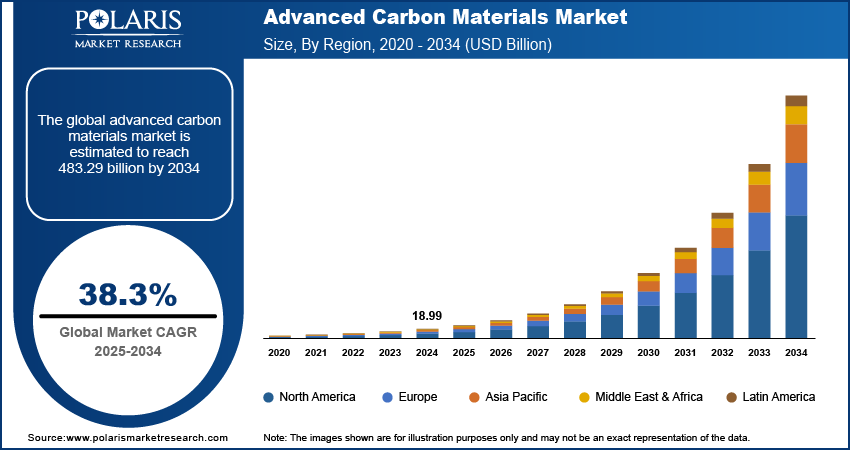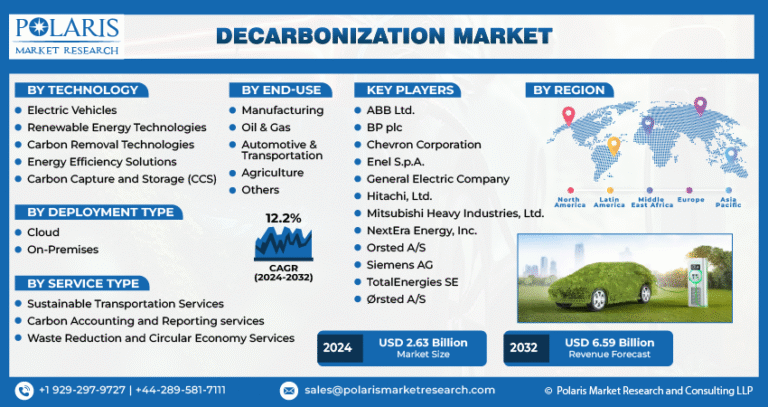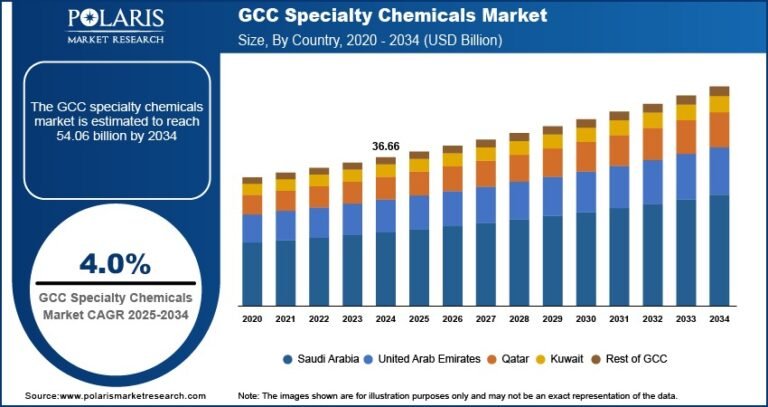Advanced Carbon Materials Market Projected at USD 483.29 Billion by 2034 | CAGR: 38.3%

The global advanced carbon materials market was valued at USD 18.99 billion in 2024 and is expected to grow from USD 26.10 billion in 2025 to USD 483.29 billion by 2034, registering a remarkable CAGR of 38.3% during the forecast period from 2025 to 2034.
Advanced Carbon Materials Market Trends & Insights:
- Growing demand from aerospace, automotive, and electronics industries is driving market growth due to the lightweight and high-strength properties of advanced carbon materials.
Rising adoption of carbon nanotubes and graphene in energy storage, sensors, and conductive coatings is boosting innovation. - Sustainability and environmental concerns are pushing manufacturers to develop eco-friendly carbon-based alternatives.
- Ongoing R&D efforts are leading to new applications in medical devices, filtration systems, and additive manufacturing.
- Asia-Pacific remains a key market due to rapid industrialization, with China and Japan leading in production and consumption.
- Strategic collaborations and investments are shaping the competitive landscape, with key players focusing on high-performance composites.
Market Size & Forecast:
- Market size value in 2025 – USD 26.10 billion
- Revenue forecast in 2034 – USD 483.29 billion
- CAGR – 38.3% from 2025 – 2034
𝐆𝐞𝐭 𝐄𝐱𝐜𝐥𝐮𝐬𝐢𝐯𝐞 𝐒𝐚𝐦𝐩𝐥𝐞 𝐏𝐚𝐠𝐞𝐬 𝐨𝐟 𝐓𝐡𝐢𝐬 𝐑𝐞𝐩𝐨𝐫𝐭:
Advanced Carbon Materials Market Overview:
The advanced carbon materials market is witnessing significant growth, driven by increasing demand for lightweight, high-strength, and thermally conductive materials across industries such as aerospace, automotive, electronics, energy storage, and defense. Key materials like carbon fibers, carbon nanotubes (CNTs), graphene, activated carbon, and structural graphite are gaining prominence for their exceptional mechanical, electrical, and thermal properties. Their integration into lithium-ion batteries, supercapacitors, and advanced electronics is accelerating with the rise of electric vehicles, renewable energy systems, and compact, high-performance electronic devices. In particular, carbon fibers and CNTs are increasingly used to enhance fuel efficiency, reduce emissions, and enable miniaturization in high-tech applications.
Regionally, Asia-Pacific dominates the market, led by countries like China, Japan, and South Korea, owing to strong industrial infrastructure and growing investments in clean technologies and electric mobility. North America and Europe are also key players, benefiting from aerospace innovation and a push toward sustainable, advanced materials. While challenges such as high production costs and complex processing persist, continuous advancements in scalable manufacturing and material synthesis are reducing barriers. Looking ahead, the market is projected to maintain a strong growth trajectory through 2034, driven by evolving technological demands, stricter environmental regulations, and broader adoption across diverse end-user industries.






